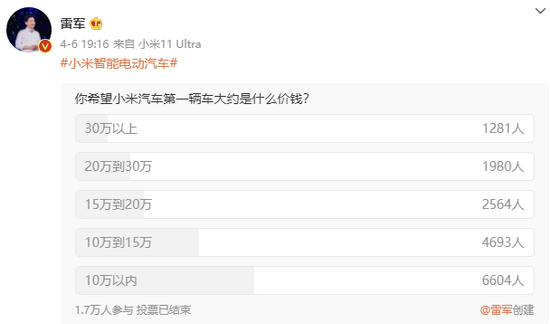Recently, Xiaomi Automotive Technology Co., Ltd. announced its first publicly disclosed patent, titled “Control Method, Device, and Readable Storage Medium for Multiphase Motor.” The patent was applied for in December 2021 and has the patent number CN202111670099.2 and publication number CN114301372A, with Wen Hui Luo as the inventor.
According to the abstract, the method described in the patent involves obtaining the current position of the rotor in a multiphase motor in the event of a phase failure, determining its target area, and controlling the motor based on the corresponding control strategy of the target area. This patent provides a fault-tolerant control method for motors without the need for additional hardware modifications, thus improving the reliability of the electric drive system.
Typically, electric vehicles use permanent magnet multi-phase DC motors, which have better advantages in terms of power and reliability. The “phase” here refers to the number of coil groups inside the motor. The “phase failure” in electric vehicles refers to the power outage of one or more coil sets, resulting in a decrease in output power. If the external load is constant, the driver may feel a decrease in power and press the accelerator pedal harder, which may cause the stator windings to momentarily have a much larger current than normal and may even burn out the motor. The cause of “phase failure” may be poor contact or misjudgment of the insurance of the electronic control system. Although the patent from Xiaomi Automotive Technology Co., Ltd. does not explicitly explain the method for dealing with phase failure, it can be roughly inferred that the patent starts with the angle of the motor rotor and dynamically adjusts the energy input according to its rotational position to prevent overheating.
This patent is an indication of Xiaomi’s latest progress in the automotive industry, and it shows their commitment to developing innovative solutions to improve the performance and reliability of electric vehicles.# Xiaomi’s Patents in the Automotive Industry
Aside from its first public patent in the automotive field, Xiaomi has numerous other related patents, with its only technology advantage in the field perhaps lying in its intelligent driving system. As stated by Lei Jun, Xiaomi has the best intelligent ecosystem. Looking through Xiaomi’s automotive patents, the majority of its public items also involve control systems.
According to statistics from QCC Intellectual Property Information, Xiaomi Technology Co., Ltd. has a total of 6,758 valid patents, among which there are 211 patents containing “engine, navigation, car, driving, radar, and driving” in the patent name or abstract. Taking intelligent driving as an example, Xiaomi’s applied patents include dozens of patents such as blind spot monitoring of a vehicle safety system, a device for reminding drivers to rest during the driving process, an intelligent automobile driving control method and device, and a method and terminal for remotely controlling a vehicle. Most of these patents were applied for by Xiaomi Technology Co., Ltd. around 2015 and 2016.
Moreover, Xiaomi has related patents in monitoring and detecting driver driving states. In 2015, Xiaomi applied for multiple patents, such as a method and device for detecting fatigue driving, an assisted driving method and device, a method and device for achieving safe driving, and a method and device for detecting driving safety. Of course, among these patents, many used mobile terminals to detect driving states, but in the future application scenarios of electric vehicles, there will also be similarities in the associated driving state detection technology.
Xiaomi also has patent layouts in vehicle positioning, navigation, cruising, and radar, among other areas. Previously, Xiaomi had already accumulated significant technological experience in mobile terminal positioning and navigation, which could be directly applied to vehicle driving. In terms of vehicle cruising, Xiaomi has also publicly disclosed patents such as “method and device for achieving constant speed cruising” and “control method for vehicle constant speed cruising”.
Xiaomi has also released a patent for “radar detection methods, terminals, and storage media.” According to the patent abstract from QCC, this patent makes the terminal part of the vehicle’s anti-collision system and detects the motion information of objects in front of the direction of travel of the vehicle while it is in motion, thereby eliminating the need for the vehicle to have a separate millimeter-wave radar sensor, reducing the cost of the vehicle and improving the user experience. Thus, in terms of positioning navigation and vehicle cruising technology, Xiaomi has already accumulated a certain amount of technological reserves.
Therefore, from the number, quality, and coverage of patents, Xiaomi is far from weak in vehicle manufacturing technology, but rather has significant advantages.
Future Development of Xiaomi’s Automotive BusinessAccording to Xiaomi’s plan, its first car model is positioned as a mid-to-high-end model, with a price range expected to be between 150,000 and 300,000 yuan. The first car is expected to be mass-produced by 2024, followed by four new models, including two A+ level and two B-level models.

As an internet mobile phone company, Xiaomi was not well received when it announced its entry into the carmaker industry. No one believed that Xiaomi could make any progress in just one year. After all, since 2014, tech giant Apple has been preparing to launch its own car project, but as of today, there have been many setbacks in the development of Apple’s car project, and there have even been rumors that Apple’s car team has been disbanded.
Looking back at Xiaomi, it lacks the advantages that Apple possesses in terms of technology and resources. Besides, for tech companies entering the new energy vehicle industry, it is generally considered to be a “money burning game,” and hundreds of billions of investment capital are prerequisites. However, Xiaomi’s initial capital for car-making was only 10 billion yuan. Although it does not have strong strength and financial resources, Xiaomi’s speed of growth in the automotive industry is surprising. Of course, this cannot be separated from Xiaomi’s firm determination to build cars, in order to create car products that are more in line with or even exclusively for the current young consumers.

For new car companies like Xiaomi that lack car manufacturing experience and have immature car research and production technology, they will face various challenges and difficulties. If a car model does not have strong product strength as a prerequisite, even if you have a good reputation in the industry, the brand influence you gain after crossing over may not be enough to support the sales of a car model. Therefore, facing many powerful and experienced competitors, can Xiaomi cars break through the siege and succeed? Let’s wait and see.
This article is a translation by ChatGPT of a Chinese report from 42HOW. If you have any questions about it, please email bd@42how.com.
